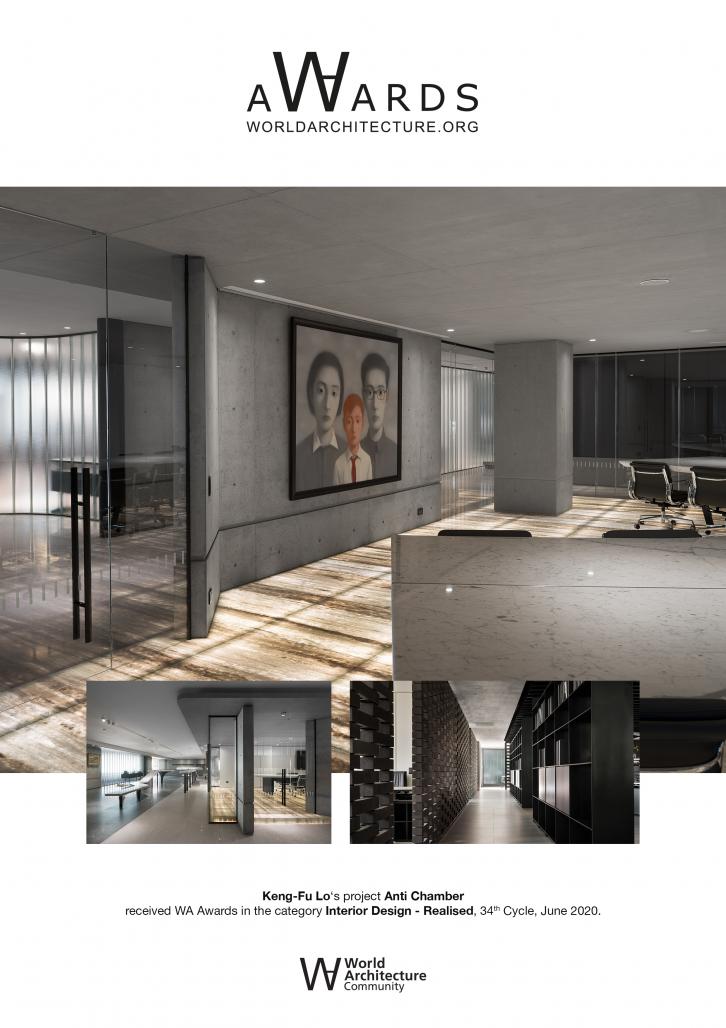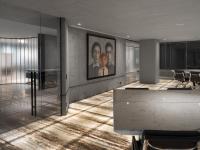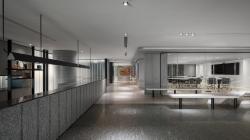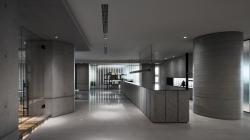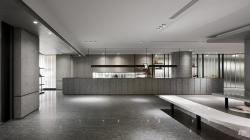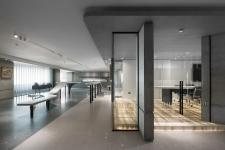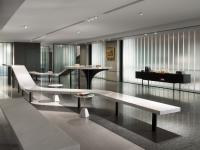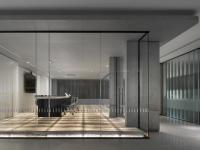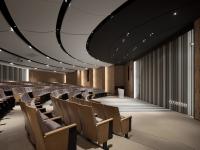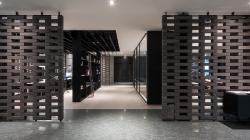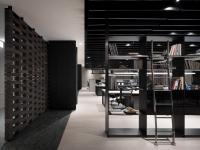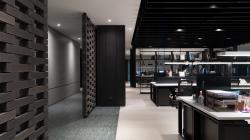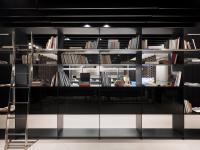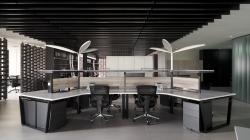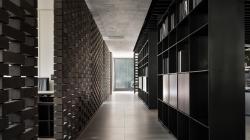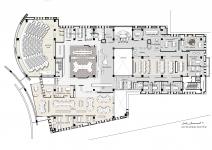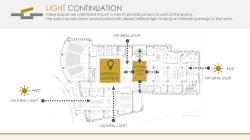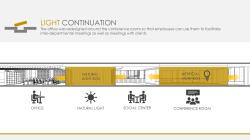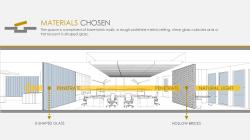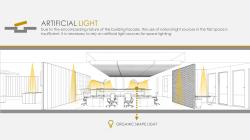The purpose of architecture is to guide people's perception of light and shadow in a space. The goal of interior design is to manifest the physical feelings of materials in the space despite in some cases, the lackluster building conditions. People express their understanding of architecture and interior design through their five senses. They must satisfy the ears, smell, taste, touch, and sight at the same time. Such a living space will have a positive connotation to any observer. In this project, the area of a single floor of the corporate headquarters was nearly 2000m².
The client told us that they wanted a drastic redesign of the second floor to improve the overall efficiency of the space. The challenge was that we were stuck within the limitations of the external structure. It lets in far too little natural light. It is necessary to rely on artificial light sources for space lighting.
The new office space provides a social center with various meeting spaces and a lecture hall that supports simultaneous language translation. In addition, it integrates the office area of the financial accounting department and the investment department to provide a more efficient service for the entire office.
All of the work spaces were built around the conference rooms which meant there was no unnecessary traffic or additionally disturbances in any particular area. The glass compartments take into account the privacy of employees in the space. These spaces are accentuated by use of artificial light to provide vibrancy to the occupants. The poor natural lighting was supplemented with plentiful artificial lighting to improve the energy of the spaces. The unique furniture was chosen to steer away from the typical image of an office and provide visual interest to the employees.
2018
2019
The office space takes into account the typical conversations that naturally occur during a day. The ceiling is comprised of sound-absorbing materials to try to solve the common issue of excessive noisiness in the office space. The lack of windows in the building space, and the numerous internal cubicles, interfere with the flow of air and create humidity issues. This was solved by the careful selection of ceramic tiles to help alleviate humidity and noise.
Due to the encompassing nature of the building facade, the use of natural light sources in the flat space is insufficient. Looking closer at the lighting, they have a unique organic shape to blend in with the earthen colors of the office. The privacy and collaborative ability of large flat-floor office spaces often change due to the natural light sources of the building. In this case, the use of gray, a low-reflective material, helps reduce the diffusion of light sources. This means there is less disruption from exterior light during the office day. The color of the materials is mainly based on the earthen color palette. The space is comprised of bare brick walls, a rough-polished metal ceiling, clear glass cubicles and a translucent U-shaped glass. The materials chosen for the office space are the best choice for privacy and interoperability of the fluid space, presenting a minimalist and elegant new living space.
Chain10 Architecture & Interior Design Institute
Anti Chamber by Keng-Fu Lo in Taiwan won the WA Award Cycle 34. Please find below the WA Award poster for this project.
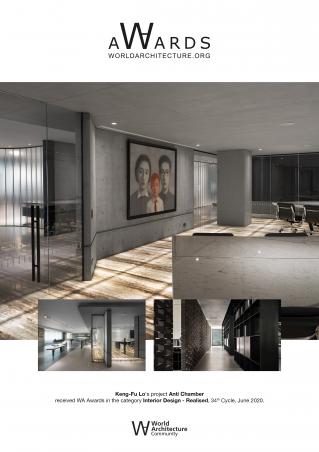
Downloaded 11 times.

